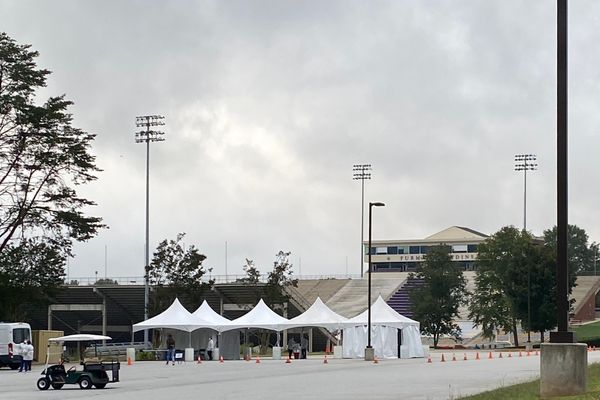A Sept. 23 Furman Focused email announced that random-sample asymptomatic testing would begin for students on Tuesday, Sept. 29. The testing will occur every Tuesday and Friday in the Daniel Chapel parking lot. Testing will cover 20% of the student population each week.
Asymptomatic testing is a new policy in Furman’s COVID-19 response. Prior to the Sept. 23 announcement, only symptomatic students reported to the Earle Student Health Center for tests. Furman originally did not require asymptomatic testing, because, as President Davis explained in a July 22 Campus Communication, a one-time negative can provide a false sense of security.”
Dr. John Wheeler from the Fall Planning Steering Committee said the decision “to add an additional layer of campus safety through randomized testing was under consideration for some time.” Recent improvements in local testing helped Furman develop a new model for its COVID-19 response. Wheeler noted the administration wanted an increase in testing to “help track undetermined sources of underlying disease on campus."
The mandatory Sept. 4-5 campus-wide testing produced a 0.24% positive rate. According to Wheeler, this statistic could have possibly changed since “the value of a single test is limited to a single point in time.” With consistent testing, the administration can better monitor changes in the virus on campus. It can also improve contact tracing strategies should a cluster of cases develop. New sampling approaches and rapid results help ensure “Furman remains as safe as possible,” said Wheeler.
No existing evidence indicates an increase in COVID-19 on campus. Wheeler also added there are no “defined expectations” for an anticipated caseload after the random testing begins.
Students responded to the testing in various ways. Junior Lauren Krotz said that she “didn’t mind the test since it only took a few seconds." Sophomore Mary Grace Cravens shared that her test also went quickly and was painless, even though she was not able to do a saliva test per her request and was instead “offered the nasal test.”
Another junior said, “This testing should have been done as soon as students got to campus,” although it is better late than never. They went on to question where funding for the tests is coming from.
Wheeler concluded that the administration does not anticipate “a significant rise in asymptomatic disease” without corresponding changes in symptomatic cases. He also said visits to the health center, changes in LiveSafe responses, and contact tracers all work together “to paint a picture of health on campus.” According to Wheeler, no single variable is considered to the exclusion of others when it comes to Furman’s COVID-19 response.
Students should continue completing their daily LiveSafe health survey and must report to testing if selected.
